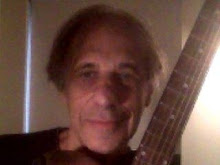If you've read the 26 volumes of testimony before the Warren Commission and books like Mark Lane's Rush To Judgement, and you've seen movies like Executive Action and the Zapruder film, you were probably skeptical about the Warren Commission's conclusions years before Time-Warner decided to market its JFK film.
According to one book I've read, Oswald was seen in the second floor cafeteria of the Texas School Book Depository, with a coke bottle in his hand, a few minutes after shots were allegedly fired from the 6th floor of the same building on Nov. 22, 1963. For Oswald to have gotten from the sixth floor to the second floor cafeteria coke machine, and to have been able to deposit coins in the coke machine quickly enough to be holding the coke bottle so soon after JFK was shot, he probably would have had to be as speedy as Clark Kent in his physical movments.
One of the earliest New York City columnists to begin questioning the accuracy of the Establishment media's version of the JFK assassination was Dorothy Kilgallen of the now-defunct New York Journal-American, who also appeared as a TV panelist on the 1950s and 1960s show What's My Line?, in addition to writing her "Voice of Broadway" gossip column for many years.
According to Lee Israel's 1979 book, Kilgallen: A Biography of Dorothy Kilgallen:
"Through the late summer and early fall of 1964, Dorothy began producing a series of explosive exclusives related to the assassination...She ascertained from the exclusive material a surprising datum that would not be incorporated into the massive Warren Commission Report. Chief Curry of the Dallas police department, who was in the first car of the motorcade, had reacted to the shots he heard with an initial command: `Get a man on top of the overpass and see what happened up there.'...
"She began to produce headline stories based upon statements and affidavits that Mark Lane supplied to her...He had talked about some of the dissident data on local radio stations. The networks had systematically prohibited him from appearing. Dorothy had a wider audience, access to print--a more suitable medium for the complex stories that wanted telling--and new insights...
"Through August and September [1964], Dorothy hung out all the dirty linen of the official case. She printed story after story of witnesses who had been threatened by the Dallas police or the FBI..."
Coincidentally, on November 8, 1965, the 52-year-old Kilgallen was mysteriously found dead in her Upper East Side bedroom. According to Kilgallen: A Biography of Dorothy Kilgallen:
"It must be considered possible that, if she was murdered, the crime was done to silence her, by a kiss-and-kill representative of whatever faction it is that does not want the facts about the assassination of JFK to emerge. Eighteen witnesses died within a little over three years of the assassination. 13 as victims of suicide, accident or murder."
The same book also observed that in 1979 "a group of film documentarians based in Florida" was "preparing a feature about the knowledgeable who died in the wake of the Kennedy assassination" and that the group had information that Kilgallen "was communicating with Jim Garrison prior to her death and that he was her New Orleans contact," according to "associates of Garrison."
Speaking of the JFK assassination in Dallas, did you ever wonder where former U.S. President Richard Nixon just happened to be on November 22, 1963? Or where former U.S. President George H.W. Bush just happened to be on November 22, 1963?
(Downtown, 1/15/92)
Subscribe to:
Post Comments (Atom)





No comments:
Post a Comment